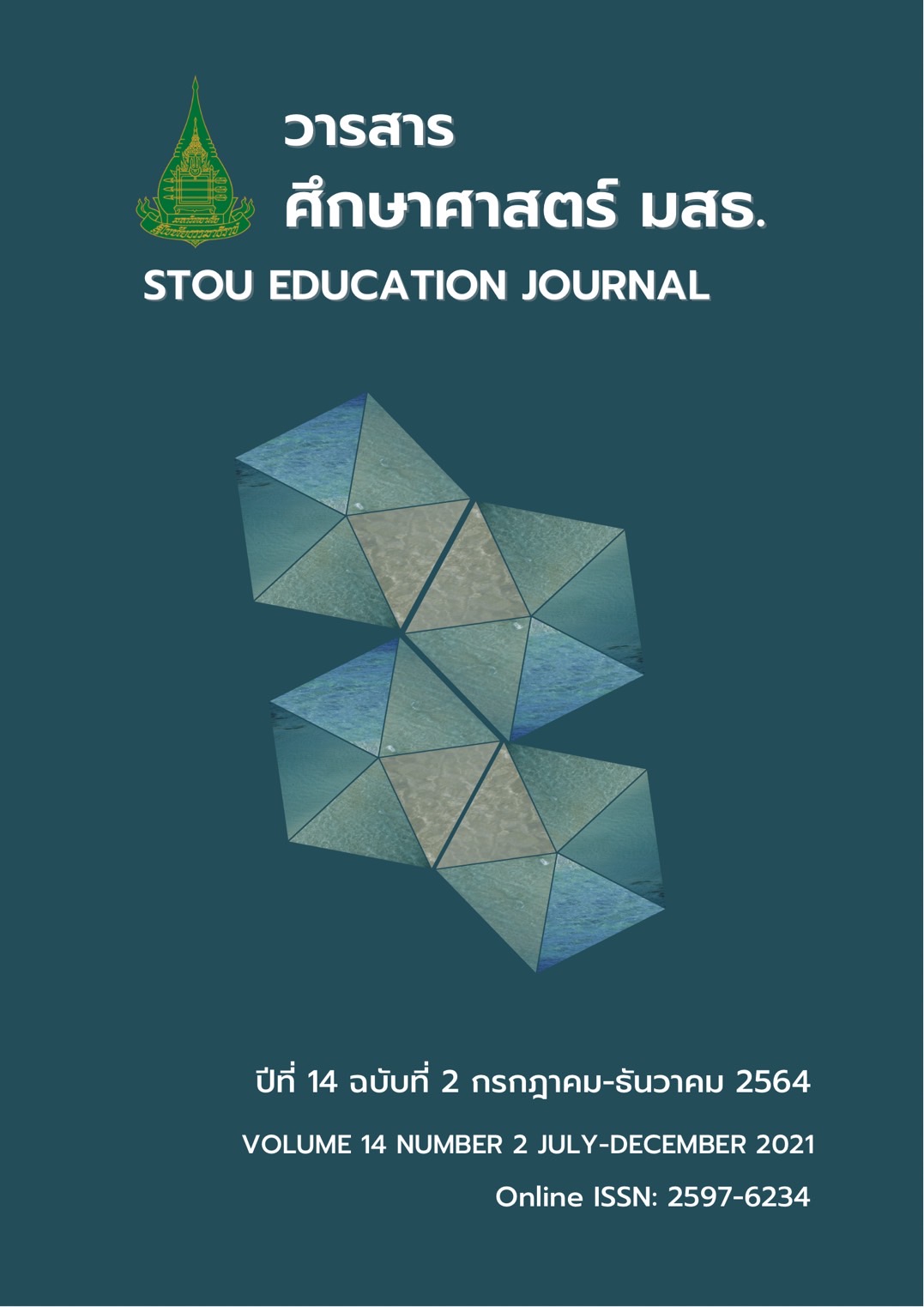External Quality Assessment of Educational Institutions: From the Best Practices of the Target Country to Higher Quality Practices
Main Article Content
Abstract
This research aimed to 1) benchmark external quality assessment of educational institutions practices of the target countries, and 2) propose guidelines for the development of external quality assessment of educational institutions. The research was conducted in two phases. The first phase of the research was conducted through a qualitative-oriented multi-case study by analyzing related documents of external quality assessment systems of educational institutions in the target countries namely South Korea, New Zealand, the Netherlands, and Malaysia. These countries were specifically selected since they have similar educational systems and external quality assessment systems to Thailand. In the second phase, the focus group discussion of nine experts was used. The experts were specifically selected based on their expertise and experience regarding external quality assessment of educational institutions. The research findings are as follows: 1) from benchmarking, it is found that there are both similarities and differences in external quality assessment of educational institutions practices of the target countries, and there are some appropriate aspects that can be used as guidelines for improving the external quality assessment of educational institutions in Thailand; 2) for proposing guidelines for the development of external quality assessment of educational institutions, it is found that (1) policy making and guidelines should be conducted in the ministry level, (2) external quality assessment processes should comprise 4 stages namely Assessment preparation (pre-site visit), Area assessment (onsite-visit) , Following-up after the standard practice assessment and adjustment basing on the result from area assessment, and Reflection of the ONESQA performance; 3) The external quality assessment and using assessment result ability should be enhanced; and 4) There should be practices following the implementation of the assessment results from the ministry level.
Article Details
References
กิตตินันท์ ชุมวัน ศิริ ถีอาสนา และฐิตารีย์ วิลัยเลิศ (2558). แนวทางการดำเนินงานตามระบบประกันคุณภาพภายใน สถานศึกษาขั้นพื้นฐาน, วารสารศึกษาศาสตร์, มหาวิทยาลัยขอนแก่น, 9(4), 1-8.
รัตนะ บัวสนธิ์. (ม.ป.ป.). การประเมินผลสถานศึกษาและการใช้ผลการประเมินเพื่อพัฒนาคุณภาพสถานศึกษา. สืบค้นจาก https://fliphtml5.com/ggpzt/mrlu/basic
วารุณี ลัภนโชคดี. (2560). ปัจจัยที่ส่งผลและพัฒนาการของระดับคุณภาพของสถานศึกษาขั้นพื้นฐานจากผลการประเมินคุณภาพภายนอกทั้งสามรอบ ของสำนักงานรับรองมาตรฐานและประเมินคุณภาพการศึกษา (องค์การมหาชน). (รายงานการวิจัย). กรุงเทพมหานคร : สำนักงานรับรองมาตรฐานและประเมินคุณภาพการศึกษา (องค์การมหาชน).
ศิริเดช สุชีวะ, ใจทิพย์ ณ สงขลา และ ทิพวัลย์ ปัญจมะวัต. (2561). การวิจัยเพื่อพัฒนารูปแบบและวิธีการพัฒนา สมรรถนะผู้ประเมินภายนอก. วารสารวิธีวิทยาการวิจัยทางการศึกษา, 31(3), 258-279.
ศูนย์สำรวจความคิดเห็น “นิด้าโพล”. (2561) . รายงานผลการสำรวจความพึงพอใจต่อแนวทางการประเมินคุณภาพภายนอกรอบสี่ของสำนักงานรับรองมาตรฐานและประเมินคุณภาพการศึกษา (องค์การมหาชน)
ประจำปีงบประมาณ 2561. สืบค้นจาก http://www.onesqa.or.th/upload/download/201903121824365.pdf.
Bronfenbrenner, U. (1990). Discovering what families do. In Rebuilding the Nest: A New Commitment to American Family, Family Service America. Retrieved from https://www.researchgate.net/publication/ 257526983_CULTURAL_SPACE_AND_SELF_IDENTITY_DEVELOPMENT_AMONG_DEAF_YOUTH/figures?lo=1
Cheng, Y. C. (1996). A school-based management mechanism for school effectiveness and development.
School Effectiveness and School Development, 17(1), 35-61.
Ehren, M. C. M., & Visscher, A. J. (2008). Towards a theory on the impact of school inspections. British Journal of Educational Studies, 54(1), 51–72.
Lindberg, E. (2013). School-based management with or without instructional leadership: experiment Sweden Journal of Education and Learning, 2(3), 39-50.
OECD. (2013). School Evaluation: From compliancy to quality. Retrieved from https://www.oecd- ilibrary.org/ docserver/9789264190658-10-en.pdf.
Ofsted (2012).Qualifications, experience and standard required of additional inspectors undertaking inspections on behalf of Her Majesty’s Chief Inspector of Education, Children’s Services and Skills and House of Commons Education Committee (2011), In The role and performance of Ofsted. London: The Stationery Office Limited.
Schagen, S., & Wylie, C. (2009). School resources, culture and connections. Wellington: NZCER.
Scheerens.J., Ehren,M., Sleegers,P.,de Leeuw,R. (2012). OECD Review on Evaluation and Evaluation Frameworks for Improving school Outcomes:Country Background Report for the Netherlands. University of Twente. Retrieved from www.oecd.org/edu/evaluationpolicy.
Scheerens,J., Ehren, M., Sleegers, P. & de Leeuw, R. (2012). OECD Review on evaluation and assessment frameworks for improving school outcomes: Country background report for the Netherlands. University of Twente, the Netherlands. Retrieved from https://www.oecd.org/education/school/NLD_CBR_Evaluation_and_Assessment.pdf
Schildkamp, K. K., Rekers-Mombarg, T. L. & Harms. J. (2012). Student group differences in examination results and utilization for policy and school development. School Effectiveness and School Improvement, 23(2), 229-255.
Van Bruggen, J. (2010). Inspectorates of Education in Europe; Some comparative remarks about their tasks and work. Brussels: SICI.


